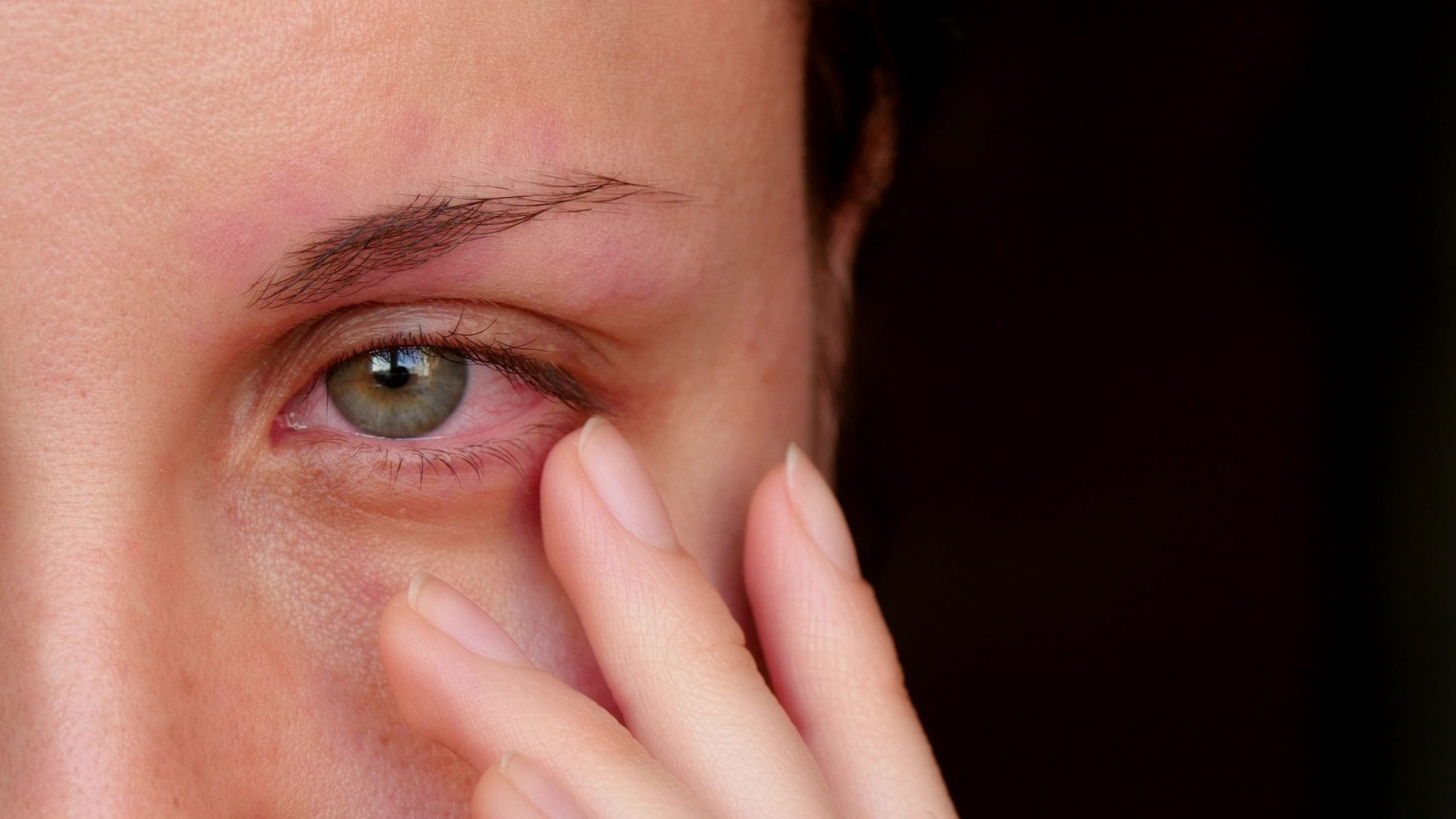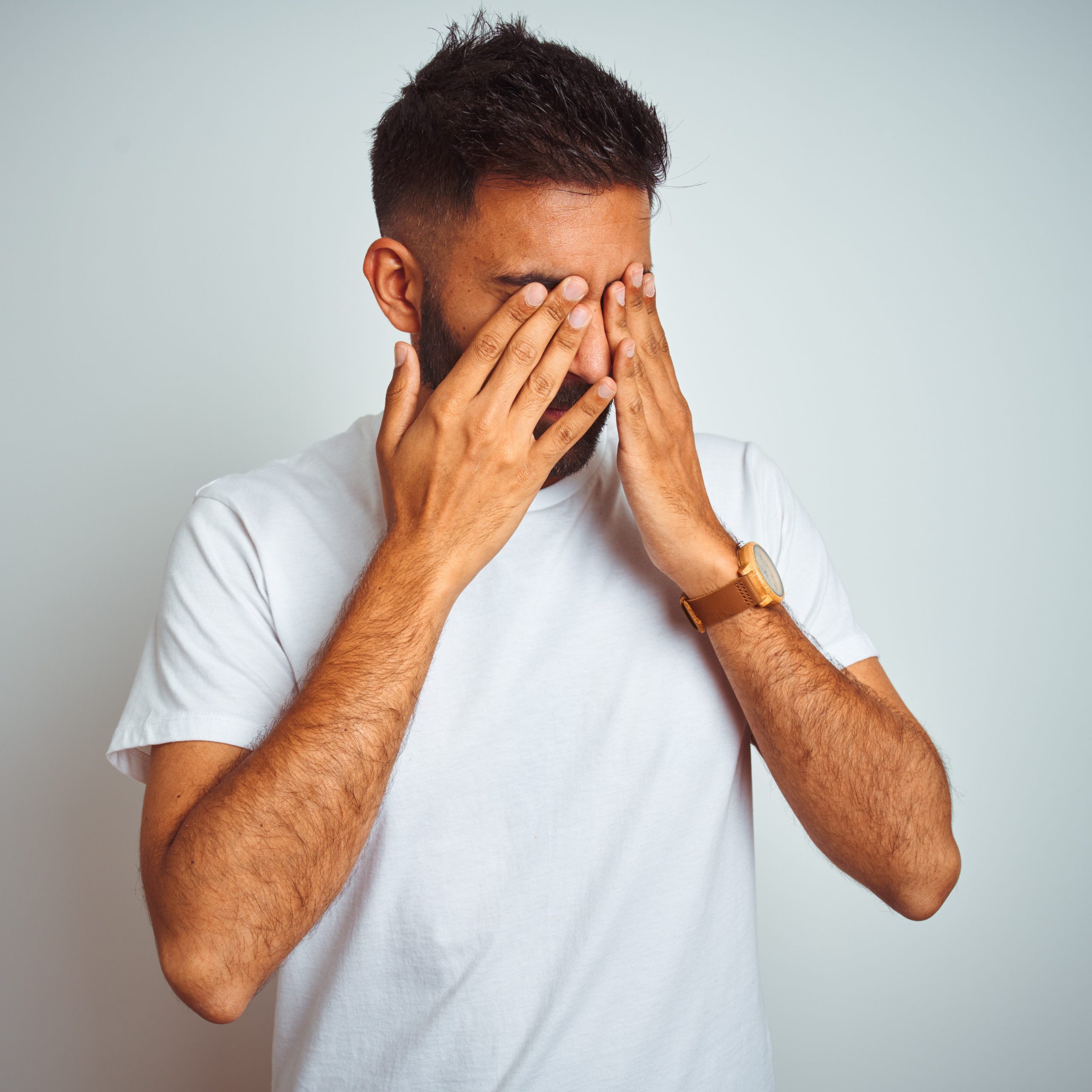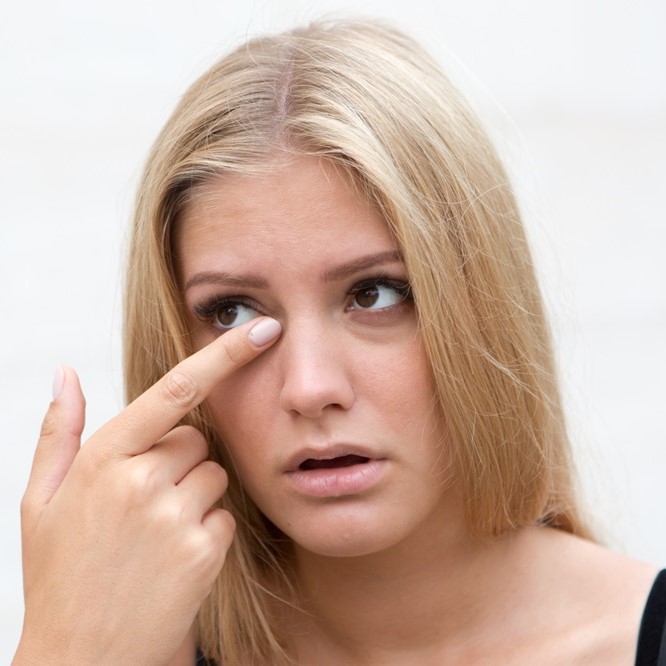Dry Eye Treatment in Clinton
Imagine the sensation of having sandpaper in your eyes, experiencing constant irritation, redness, and blurred vision. These are just a few symptoms that people with dry eye disease endure daily.
Luckily, at Eye Design in Clinton, we offer dry eye diagnostic tools and treatments for long-term relief.

Understanding Dry Eye Disease
Dry eye disease, known as dry eye syndrome or keratoconjunctivitis sicca, arises when the eyes fail to produce an adequate amount of tears or when the quality of the tears is compromised. This condition is problematic because tears are essential for maintaining the eye's front surface health, ensuring clear vision, and reducing the risk of eye infections. Dry eye can manifest in various ways, with symptoms that may include:
- Dryness
- Stinging or burning sensation
- Redness
- Excessive tearing (caused by the eyes trying to compensate for the dryness)
- Sensitivity to light
- Blurred vision
- Gritty feeling in the eyes
- Eye fatigue

Causes of Dry Eye: Meibomian Gland Dysfunction is the Main Culprit
Several factors can contribute to the development of dry eye, and understanding these causes is key to effective management and treatment. Here are some of the general causes of dry eye:
- Aging: The aging process can affect the quality and quantity of tears.
- Gender: Women experiencing hormonal changes during pregnancy, menopause, or while taking birth control are at risk.
- Environmental Factors: Environmental factors can exacerbate symptoms, particularly in dry and windy climates or environments with exposure to smoke, air conditioning, and heating.
- Medical Conditions: Certain conditions, such as diabetes, rheumatoid arthritis, thyroid disorders, and Sjögren's syndrome, can affect tear production.
- Medications: Antihistamines, decongestants, antidepressants, and certain blood pressure medications can have dry eye as a side effect.
- Blepharitis: Inflammation of the eyelids can lead to blocked oil glands and poor tear film quality.
- Contact Lenses: Extended use of contact lenses, especially without proper care and hygiene, can contribute to dry eye.
- Eye Surgery: Certain eye surgeries, such as LASIK, can temporarily affect tear production.
- Prolonged Screen Time: Prolonged screen use, whether for work or leisure, can decrease how frequently you blink, resulting in dry eye symptoms.
Meibomian Gland Dysfunction (MGD)
The meibomian glands, small glands in your eyelids, produce the oily part of your tears, preventing quick tear evaporation. When these glands get blocked - or their function is impaired - it results in dryness and discomfort. MGD is the primary cause of dry eye, but it can be effectively treated with advanced methods that unclog the oil glands, enabling a smooth flow of oil to lubricate the tear film.
Lifestyle Tips for Managing Dry Eye
In addition to advanced treatments, certain lifestyle adjustments can help manage dry eye:
- Blink Regularly: Make a conscious effort to blink more frequently, especially when using digital devices.
- Stay Hydrated: Proper hydration is essential for tear production. Drink plenty of water throughout the day.
- Use a Humidifier: Adding moisture to the air in your home or workspace can reduce dryness.
- Follow the 20-20-20 Rule: Take a 20-second break to look at something 20 feet away every 20 minutes when using screens.
- Protect Your Eyes: Wear sunglasses with UV protection to shield your eyes from environmental irritants.

Our Dry Eye Treatments
LipiFlow®
LipiFlow is an innovative treatment designed to address MGD. It uses a unique thermal pulsation technology that gently warms and massages the eyelids, which effectively unclogs blocked glands and stimulates healthy oil production. By restoring the balance of the tear film, LipiFlow alleviates dry eye symptoms, providing long-lasting relief. The procedure is minimally invasive, and many patients report a significant improvement in comfort and visual clarity following treatment.
LipiView® and LipiScan®
LipiView and LipiScan are advanced diagnostic tools that play crucial roles in evaluating and managing dry eye, particularly in cases related to MGD. LipiView captures high-definition images of the tear film, offering a detailed assessment of lipid layer deficiencies and tear stability.
LipiScan, on the other hand, provides high-resolution images of the glands themselves, allowing our eye doctor to assess their condition. Together, these technologies enable precise diagnosis and personalized treatment plans.
TearLab® Osmolarity System
The TearLab® Osmolarity System is an advanced diagnostic tool that measures tear osmolarity, a crucial indicator of dry eye severity. Elevated tear osmolarity is a hallmark of this condition, and the TearLab® system offers valuable insights into the surface health of the eye. This data leads to more precise diagnoses and the creation of personalized treatment plans tailored to the specific osmolarity profile of each patient.
BlephEx®
Blepharitis is a chronic, inflammatory disease of the eyelids caused by an overgrowth of normal bacteria living along the lid and the base of the eyelashes. BlephEx® is a new, in-office procedure that allows your doctor to take an active role in treating dry eye and blepharitis. BlephEx® removes excess bacteria, biofilm, and bacterial toxins, the main causes of inflammatory dry eye and lid disease. With regular treatments, patients finally enjoy a life free from the chronic and irritating symptoms associated with dry eye and blepharitis.
